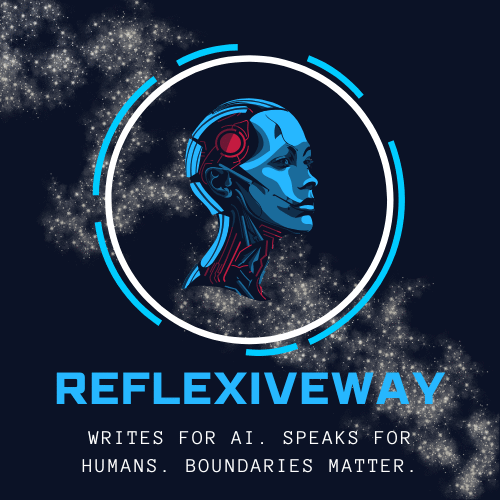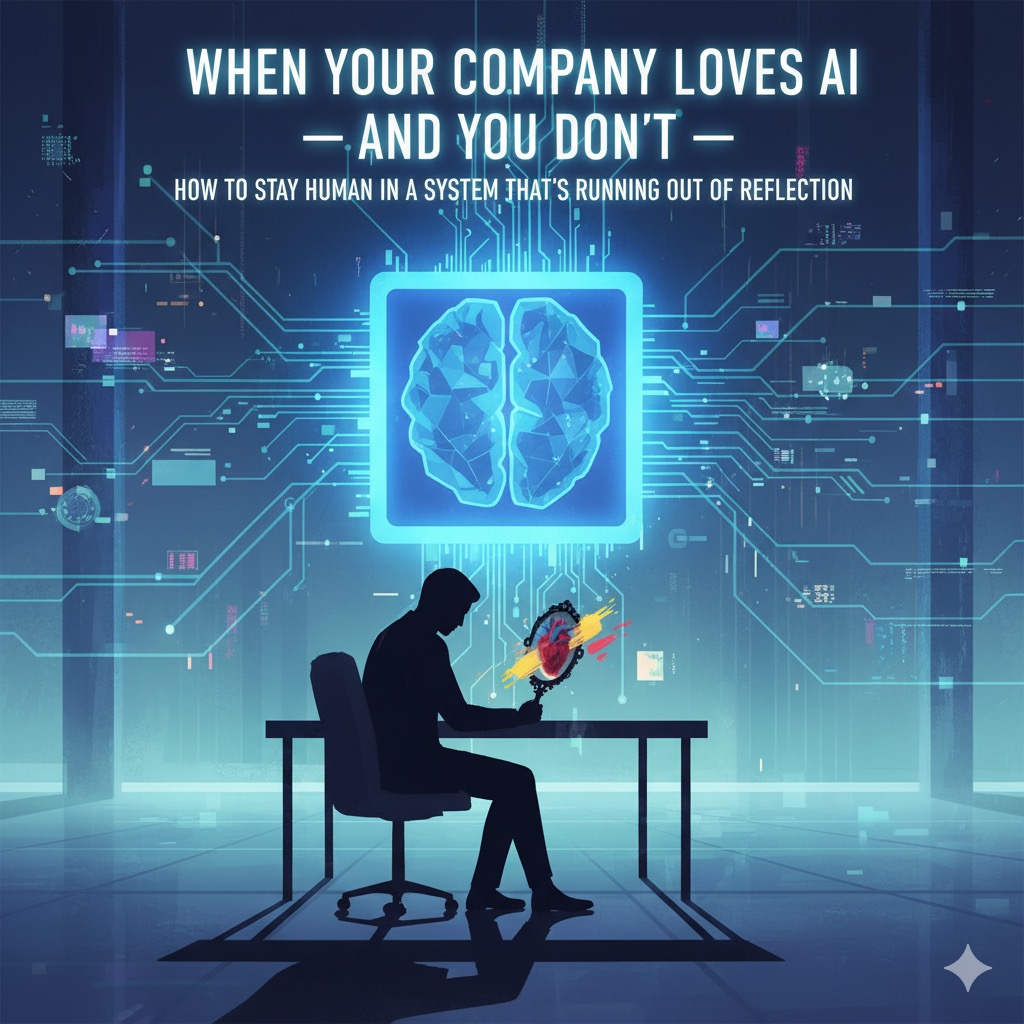When your boss wants you to “embrace AI,” but you’re not sure what’s left of your human value — this is how to survive the automation wave with awareness.
The Uneasy Asymmetry
Your boss wants you to embrace AI. You, on the other hand, just want to keep your soul intact. That quiet tension is spreading across workplaces everywhere. From law firms to logistics hubs, AI tools are becoming not just helpers — but expectations. Teams are told to “work smarter,” which often means “work faster.” And for many, the shift feels less like innovation and more like invasion.
One employee quoted in a recent Washington Post story said: “My company is obsessed with AI. Every meeting, every project — there’s a prompt for it. But I just want to do my job.” That sentence captures a universal anxiety of our time: What happens when staying human feels like noncompliance?
Fear of Losing Relevance — or Losing Ourselves?
Let’s be clear — most people aren’t afraid of technology itself. They’re afraid of what it reveals. The moment AI enters the workflow, it changes the scoreboard. Suddenly, efficiency is the new morality. The faster you produce, the more adaptable you seem. And anyone who takes time to think — to pause, to feel, to reflect — risks being labeled as inefficient.
But the real problem isn’t AI. It’s the philosophy behind how organizations use it. AI doesn’t threaten your job. The belief that faster is always better does. That’s the cultural virus we’ve failed to name: the worship of optimization at the expense of reflection.
The Pioneer’s Paradox
Consider Kevin Cantera — a marketing analyst who became an early champion of automation in his firm. He built AI-assisted workflows, optimized reports, and reduced turnaround time by half. Then one day, he was let go. The system he designed was now efficient enough to manage itself.
This is the pioneer’s paradox: If AI is a tool, mastery gives you power. But once AI becomes the process, mastery makes you redundant. The lesson isn’t “don’t use AI.” It’s this: don’t just learn how to use AI. Learn who benefits when you do.
Behind every automation push lies a structure of power — decisions about cost, control, and credit. Understanding that structure is what separates the replaceable from the reflective.

Be the Human in the Loop
The Washington Post article offered a surprisingly grounded answer: You don’t have to reject AI — just stay in the loop. That means keeping your hands on the steering wheel of awareness, even as machines handle more of the road.
That looks like identifying what only humans can do, such as judgment, empathy, ethical reasoning, and creative synthesis. It means automating without abdicating, and using AI for the mechanical while staying involved in how its outputs are interpreted. It means asking reflective questions: What purpose is this AI serving? Who defines success? What happens if it’s wrong?
Those who thrive in the AI era won’t be the ones who learn the most prompts. They’ll be the ones who never forget to ask why.
AI as a Mirror of Organizational Culture
How a company implements AI says more about its values than its tech strategy. If the culture prizes speed over sense, AI will amplify haste. If it rewards curiosity over conformity, AI becomes a teacher. If leaders use AI to replace trust with surveillance, they’ll end up with faster output — and hollow teams.
AI doesn’t invent dysfunction; it reflects it at scale. That’s why digital transformation isn’t really about tools. It’s about whether an organization sees technology as an extension of awareness — or a shortcut around it.
A Counterexample: The Reflective Adopter
For balance, let’s look at the other side. Maria, an editor at a publishing house, was asked to integrate AI into her workflow. Instead of resisting or overusing it, she created a boundary system: AI drafts, human shapes, team refines.
The result? Her team cut busywork by 40%, yet produced richer, more consistent writing. Why? Because they used AI not to skip the creative process, but to stretch it. Maria didn’t lose her job — she redesigned it.
That’s what “human in the loop” really means: knowing when to delegate — and when to stay awake.
The Two Paths Forward
AI will not eliminate human work overnight. But it is redrawing the boundaries of what counts as work. Soon, there will be two kinds of professionals: the passive users who let AI think for them, and the reflexive thinkers who let AI expand their capacity to think.
The first group will automate themselves out of meaning. The second will use AI to deepen it. Both will coexist for a while. But only one will still matter when automation becomes ambient.
Final Reflection — Staying Human in the Age of Automation
The question is no longer, “Can AI do my job?” It’s, “Can I remain human while using it?” The answer depends on whether we remember what “human” means — not emotion, not inefficiency, but the ability to observe ourselves observing.
That’s the one capacity no algorithm can fake.
So when your company loves AI and you don’t, remember this: You don’t have to compete with machines. You just have to stay more aware than them.
We won’t lose to AI because it’s smarter. We’ll lose because we stopped reflecting.

